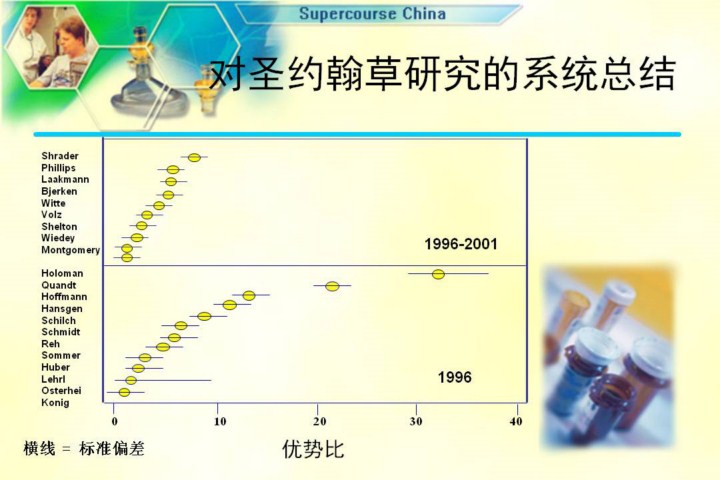| front |1 |2 |3 |4 |5 |6 |7 |8 |9 |10 |11 |12 |13 |14 |15 |16 |17 |18 |19 |20 |21 |22 |23 |24 |25 |26 |27 |28 |29 |review |
 |
A survey of all the research articles on control trials of St. Johnís Wort for depression published in the British Medical Journal in 1997 looked at the relative extent to which patients on St. Johnís Wort did better than patients on placebo. This is the odds ratio. You can see in this dozen studies wide ranging, with some studies purporting extraordinarily greater efficacy at a level actually unseen with any conventional antidepressants. These, however, were small studies. They were poorly designed, with unclear end points, and in many cases, an unclear characterization of the form and severity of the depression of the subjects enrolled. Since 1997, there have been eight additional studies, and what you can see in this graphic is that the average hint of effectiveness is now lower because these studies have gotten progressively larger and progressively more careful. And itís what we know about doing trials of anti-depressant drugs as well as this background, that led to the design of the multi-center trial that Jonathan Davidson at Duke University chaired.
圣约翰草的研究系统回顾
|